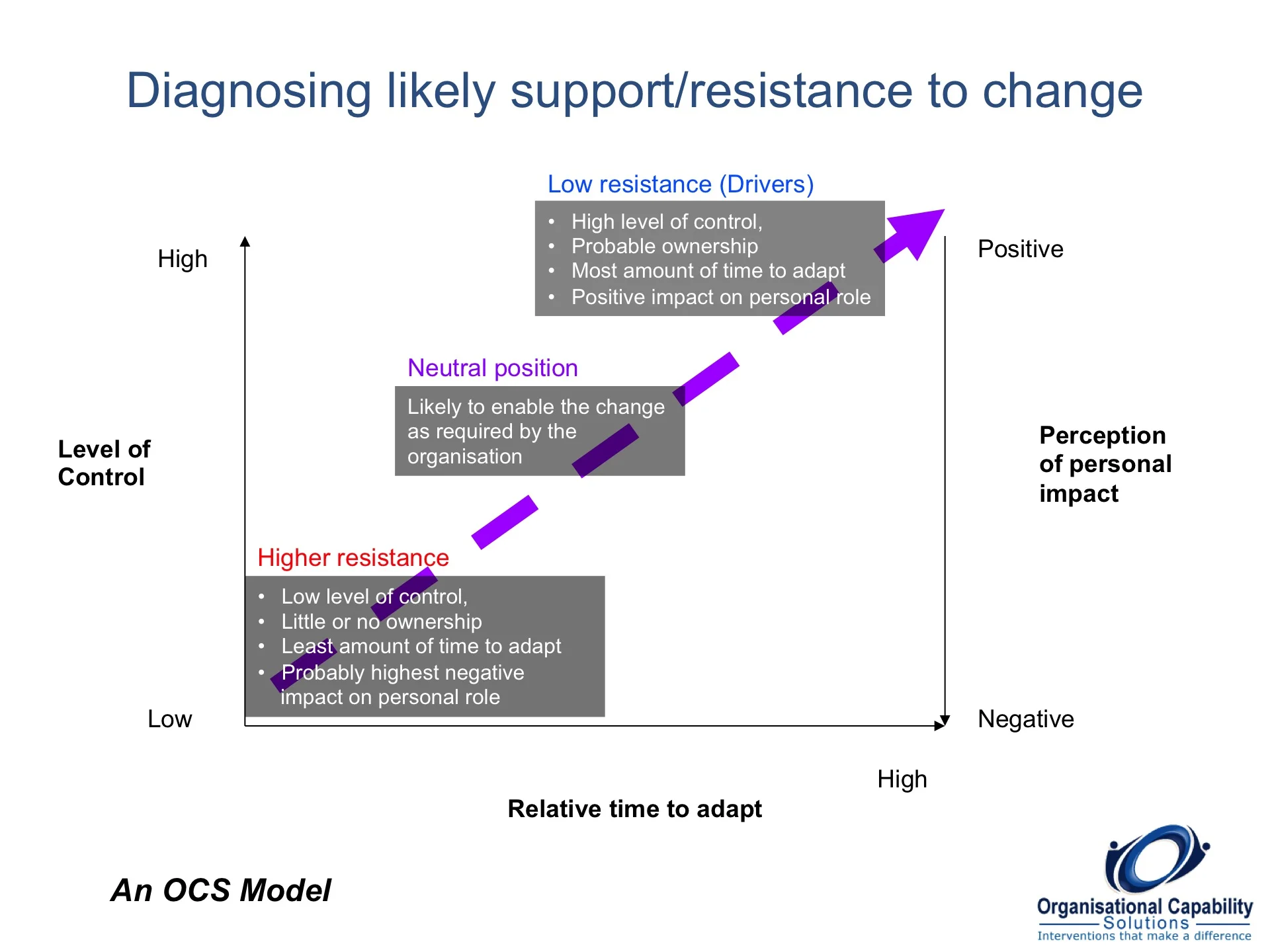Organisational Change
/So you are clear in where I am coming from regarding the value to organisations in investing in 'effective' change management, there are broadly two drivers for me:
- It is just the decent thing to do.
- An organisation that has high capability in dealing with change is going to deliver significantly more value in the medium to long term than organisations that have lower capability.
I have been applying a model to assist in the diagnosis of the likely level of support or resistance for a particular change. By having an insight into the likely level of support or resistance by any stakeholder group to a particular change, we can then take a more strategic and discerning approach to the change leadership required with each of these stakeholders. This will make the change strategy a far more effective one.
I have found that three of the key elements are:
- The perceived level of control over the change
- The perception of the positive personal impact of the change
- The time there is to prepare for, get used to the idea of, or adapt to the change.
The greater the perception of the level of control and personal impact, as well as the greater the time to adapt, generally the higher the support and lower the resistance. Conversely, the lower these things are, the lower the support and the higher the resistance. A caution on the time. If the time to introduce a change is perceived as too long, resistance can build. This can result in disbelief, cynicism and active resistance to the change. So a reasonable time to adapt is good. Too long becomes negative.
Given the above comments on time, the concepts are represented graphically below.
So with this insight, you are able to take a strategic approach that will optimise the outcomes of the change for your organisation. And yes, this means a different approach is likely for different stakeholders. As we know, one size rarely fits all. There are different approaches that can be taken for each of the combinations of control, time and personal impact. At OCS we have identified nine such combinations and identified broad strategies to address each of these nine combinations.


